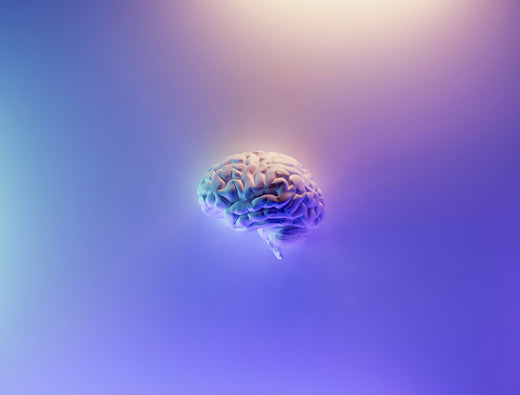Bees are crucial insects that play a key role in pollination, which is vital for plant reproduction and global food production. There are more than 20,000 bee species, with honeybees and bumblebees being the most recognised. Bees can either live in structured colonies with a queen, workers, and drones, or as solitary creatures. They communicate through the waggle dance and have remarkable navigation abilities. However, bees are threatened by pesticides, habitat loss, and climate change, making their protection essential for biodiversity and food security.
Bee intelligence
Honeybees, despite having small brains, exhibit impressive cognitive abilities in memory and learning, often surpassing some vertebrates. Cognitive skills can be categorised into stages: “sensing” (simple stimulus responses), “behavior” (conditioned responses, like associating a scent with a food reward), “intelligence” (problem-solving and reasoning), and “consciousness” (self-awareness, emotions, and intentionality). While consciousness was once considered unique to humans, modern science is challenging this notion, recognising that other animals, including bees, may possess forms of awareness and creativity.
Here’s how they do it:
Sensing: Bees have highly developed sensory systems, including exceptional vision and a strong sense of smell, allowing them to identify patterns, colors, and scents that guide them to food sources.
Intelligence: Bees demonstrate problem-solving skills by figuring out how to access food, using tools, and even collaborating with others. Their small but efficient brains process complex information and enable them to adapt.
Consciousness: Studies suggest that bees may exhibit basic awareness and intentionality, as they can make decisions based on past experiences, recognise individuals in the colony, and adjust their behaviour accordingly. This indicates a level of cognitive flexibility linked to early forms of consciousness.
Behaviour: Bees can learn to associate specific scents with rewards, like nectar, through classical conditioning—linking a neutral stimulus (a scent) with a positive outcome (food).
The Remarkable Intelligence of Bees: Counting, Problem-Solving, and Tool Use:
Bees are highly intelligent creatures with impressive cognitive abilities, including counting, solving puzzles, and using tools. In one experiment, bees were trained to fly past three evenly spaced landmarks to reach a sugary reward placed 300 meters away. When the number of landmarks was reduced, the bees flew farther than expected, and when the number was increased, they landed closer. This suggests that bees were counting the landmarks to help them navigate and decide where to land.
In another study, scientists created a puzzle box that could be opened by rotating a lid to access a sugar solution. Bees learned to solve the puzzle by pushing a red tab to turn the lid clockwise and a blue tab to spin it in the opposite direction. Remarkably, bees could not only learn this task on their own but also watch and imitate other bees to solve the puzzle.
Additionally, Asian honeybees have been observed using fresh animal feces as a tool to protect their nests from giant hornets. By smearing the feces around the entrance, they deter predators. While bees had been shown to use tools in controlled lab settings before, this was the first time such behavior was recorded in the wild.
The Remarkable Intelligence and Emotional Depth of Bees:
Stephen Buchmann, a pollination ecologist, believes bees possess complex emotions and intelligence, supported by decades of research. In his book What a Bee Knows, Buchmann argues that bees demonstrate traits like optimism, frustration, playfulness, and fear—emotions typically associated with mammals. He cites experiments showing that bees can experience PTSD-like symptoms, recognize human faces, form long-term memories, and even dream. This growing body of research suggests that bees are self-aware, sentient, and capable of problem-solving, challenging traditional views of insects as simple creatures. Buchmann’s findings not only change the way we understand bees’ mental capacities but also raise ethical concerns about how they are treated, especially in agriculture.
In addition, recent studies by scientists like Lars Chittka have explored how bees’ mood-regulating chemicals, such as dopamine and serotonin, fluctuate based on rewards or stress. For instance, bees that receive a surprise reward show increased enthusiasm for foraging, while those exposed to anxiety-producing situations exhibit decreased mood-regulating chemicals. Chittka also emphasizes that bees’ complex role as pollinators requires a sophisticated mind capable of memorizing landscapes, evaluating flower options, and making quick decisions in a constantly changing environment. He likens their foraging behavior to navigating a busy grocery store, constantly comparing and reassessing options.
The Remarkable Intelligence and Sentience of Bees:
Bees are gaining recognition not just for their pollination skills but for their remarkable cognitive abilities and potential for sentience. Lars Chittka, a top expert in bee cognition, has shown that bees are highly intelligent creatures capable of complex thought and emotions. His research reveals that bees can count, recognize human faces, and grasp abstract concepts like “same” and “different.” In one experiment, bees learned to identify and choose human faces after only a few training sessions, demonstrating strong memory and learning abilities.
Bees also excel at problem-solving. In a notable experiment, they used the number of landmarks to determine distance, showcasing their ability to count and navigate accurately. Additionally, bees can imagine how objects will look or feel, indicating a high level of cognitive flexibility.
More surprising, Chittka’s work suggests that bees experience emotion-like states. After a simulated predator attack, bees exhibited anxiety and hesitated to land on flowers, even when there was no threat, displaying behaviors similar to post-traumatic stress disorder. These findings suggest that bees may have emotional experiences, challenging traditional views on insect intelligence.
Chittka’s research paints a picture of bees as sentient beings capable of complex thoughts and feelings, urging a reevaluation of how we treat them and emphasizing the need for greater ethical consideration in our interactions with these essential creatures
Bumblebees: Proving Intelligence Beyond Brain Size
Bumblebees, often underestimated for their tiny brains, are challenging traditional ideas about intelligence. In recent studies, these insects demonstrated the ability to learn complex tasks and teach others, a behavior once believed to be exclusive to humans and primates. For instance, when trained to solve a two-step puzzle, bees could pass on their knowledge to others, showing a capacity for social learning that goes beyond individual trial and error.
This ability to transmit knowledge is part of a broader pattern observed in animal behavior, from culture in whales to tool use in crows. Bumblebees, with brains just 0.0005% the size of a chimpanzee’s, are pushing the boundaries of what we consider possible for an insect brain. Their intelligence is evident not just in their ability to learn but in how they adapt and teach, hinting at a form of culture or shared knowledge within their colonies.
Bumblebees have also shown that their behavior, like the famous waggle dance, may be shaped not just by instinct but by social learning. This discovery, along with their ability to learn and teach each other, calls into question the idea of human exceptionalism and suggests that intelligence can come in many forms, even in creatures with the smallest brains.
How Do Bees Communicate:
Picture yourself at a lively gathering, and someone excitedly tells you about an amazing place nearby where you can find the best food. Instead of just describing it, they actually show you exactly how to get there. This is similar to what happens in a beehive when a honeybee performs the “waggle dance.”
When a honeybee discovers a rich nectar source, she needs to let the rest of the hive know. So, she dances! She moves in a figure-eight pattern on the hive’s honeycomb, wiggling her abdomen during the straight part of the dance. This isn’t just for show—every move holds valuable information. The speed of the waggle tells her fellow bees how far away the flowers are, while the angle of her body reveals the direction, based on the position of the Sun.
But that’s not all. The intensity of the dance signals how plentiful the nectar is, like giving a heads-up about whether it’s worth the flight. To help her communicate even better, she releases pheromones, chemical signals that motivate the other bees and guide them to the food source.
Bees also have different dances for different situations. For flowers that are close by, they do a “round dance,” a simpler version of the waggle dance. If there’s a need for extra help—like gathering nectar fast—bees perform the “tremble dance” to call on other workers.
In this fascinating dance language, bees combine movement and scent to communicate efficiently with each other. Every wiggle, every spin, and every release of pheromones helps the colony work together seamlessly, showing how the bees’ teamwork and communication are truly remarkable.
In conclusion, bees are much smarter and more complex than previously believed. Despite their tiny brains, they exhibit advanced cognitive skills, emotional responses, and the ability to learn from each other. Through dances like the waggle dance and problem-solving abilities, they show remarkable intelligence. Bees also display signs of sentience, such as emotions and the capacity to teach others. This growing understanding emphasizes the need to protect these essential pollinators, not only for biodiversity but also for the health of our food systems.

